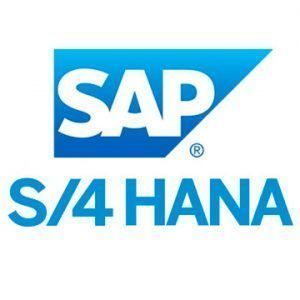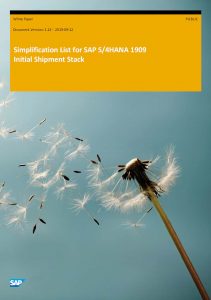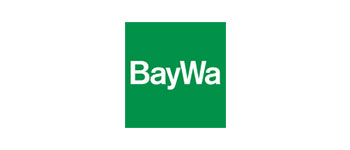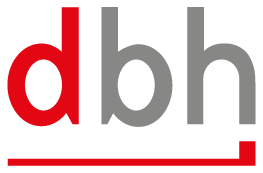dbh is SAP S/4 HANA ready!
Our plug-ins are also suitable for SAP S/4HANA
 Do you want to have your data in real time and meet the big data environment in the future? With SAP S/4HANA plug-ins from dbh, you can meet the demands of the new digital economy. Our plug-ins for Customs & Foreign Trade, Compliance and Transportation Management are already prepared to work with SAP S/4HANA in your SAP HANA environment.
Do you want to have your data in real time and meet the big data environment in the future? With SAP S/4HANA plug-ins from dbh, you can meet the demands of the new digital economy. Our plug-ins for Customs & Foreign Trade, Compliance and Transportation Management are already prepared to work with SAP S/4HANA in your SAP HANA environment.
Background: What is SAP S/4HANA?
SAP HANA was originally introduced in 2011 as a database with in-memory technology. This technology makes it possible to process huge amounts of data extremely quickly. Using the ABAP programming language, SAP HANA was later developed into a platform and many functions were added.
SAP calls SAP S/4HANA a “real-time ERP suite for digital business.” It is a completely newly developed product based on HANA’s in-memory technology.
The name is composed of:
- S: stands for one of the basic principles of the new software (“Simplicity”) and marks with the change from “R” to “S” the big development leap
- 4: After ERP R1 to R3, S/4HANA refers to the fourth generation of the SAP application suite.
- HANA: Stands for the SAP HANA database on which the ERP system is based
SAP has simplified the data model, program and system architecture to streamline and accelerate business processes. Following the “Principle of One”, in the future only exactly one solution will be available for a business requirement in the ERP system, instead of several transactions as in the past.
In addition, SAP strictly follows the strategy that the SAP system should be adapted as little as possible in the core in order to maintain release capability (“Keep the Core clean”). With the public cloud solution, changes to the core of the system are therefore no longer possible at all. On premise customizations are still possible, but not recommended. Instead, extensions and completely custom apps can be developed (side-by-side extensibility), which are seamlessly integrated into SAP S/4HANA via APIs. dbh also offers corresponding extensions for Global Trade and Shipping with the SAP plug-ins.
The interface, which is based on the Fiori standard, enables extensive personalization by the user and thus also a focus on the most important tasks, functions and activities. At the same time, the new ERP can be used on different end devices and is suitable for all operating systems and browsers.
S/4HANA variants
SAP offers S/4HANA in three variants:
(also Any Premise)
- The original version of the SAP software as a classic software license
- Especially for large companies with complex business processes
- Full range of functions and customization options
- Software releases are made annually, you decide about upgrades
Private Managed Cloud
(also Cloud Extended Edition, HEC)
- This solution is offered as Infrastructure-as-a-Service by SAP
- Suitable especially for medium-sized companies that intend to migrate to the cloud
- Available in license or subscription model
- Full range of functions, customizations and extensions are also possible
- Releases are made annually, operation and updates are your responsibility
Public Cloud
- This is the software-as-a-service in the subscription model with configurable standard processes
- This solution is aimed at small companies with fast-growing and agile business processes
- Quarterly releases
- No customization options, updates quarterly
SAP Cloud Edition
This edition is fully operated by SAP and offered as a Software-as-a-Service (SaaS) model. S/4HANA Cloud is the cloud version of configurable standard processes Finance, HR, Procurement and Sales. Accordingly, migration can only be performed using the greenfield method. Own modifications and extensions to the system are not possible, but extensions are available via the SAP Cloud Platform.
The advantage of the Cloud Edition is that you don’t have to worry about server capacity and updates. As usual with cloud solutions, maintenance is outsourced. This way you can save costs and time, but you will not have full functionality and limited flexibility. Updates are made automatically on a quarterly basis.
With SAP Cloud Edition, SAP promises rapid implementation and fast access to the latest innovations such as machine learning or predictive analytics. The aim is to prepare companies for business intelligence.
The target group is primarily companies that work in a particularly agile manner. This version is particularly flexible and offers fast innovation cycles. S/4HANA Cloud Edition is also suitable for smaller companies that do not want to deal with technical operations.
SAP S/4HANA Enterprise Cloud (HEC)
The S/4HANA Enterprise Cloud (HEC, also Private Managed Cloud) is a private cloud offering from SAP. SAP operates the solution and hosts it for customers in its own data centers. You will receive extensive support for ongoing operations in the areas of infrastructure, systems, technologies and applications.
Your solution runs in a dedicated and private cloud that offers high flexibility with the full functionality of SAP HANA. You get an on premise option in the SAP Cloud, so to speak. Customizations are possible, but are explicitly not recommended by SAP. The use of extensions is unrestricted. Updates are done annually, but you decide if you want to do them.
SAP itself describes this solution as a bridge to S/4HANA, as it can make it much easier for companies to migrate to S/4HANA by running the Business Suite. The time, effort, and cost of operating SAP HANA and its associated applications is reduced, enabling an easy move to the cloud.
This solution is particularly suitable for companies that want to move their solution to the cloud but maintain full control over their ERP system.
SAP S/4HANA - Any-Premise
In the on-premise variant of S/4HANA, customers manage the entire infrastructure – from servers to the HANA database, applications, data centers, operating systems, middleware, virtualization and the network. You decide where you want to operate the system: in your own data center (on premise), in a customer-owned virtual private cloud operated by a partner, or via IaaS offerings from hyperscale providers such as Microsoft or Google that have been specially developed for S/4HANA.
The responsibility for operation, maintenance and development lies with yourself. In this variant, the system offers the greatest possibilities and flexibility, as all adjustments and extensions can be made by your own administrators.
Due to the resources required, the on-premise model is particularly suitable for large companies that need the full functional spectrum of SAP ERP and, at the same time, high flexibility in customization. Nevertheless, it is recommended to follow SAP’s “Keep the Code clean” strategy to maintain release capability. Releases occur annually, with you deciding on upgrades.
What’s new with SAP S/4HANA?
With S/4HANA, SAP wants to help simplify and automate business processes. The S/4HANA digital core has three objectives:
A main focus is on the user interface (UI). With the third generation of the FIORI interface (Fiori 3), the UI has been revised in layout and harmonized across applications. Access to applications and information is done via the launchpad, which is similar to the home screen on a smartphone. There, role-based information is provided that is actually required for current tasks. Typical tasks can becompleted quickly and independently of the device via Fiori Apps, even when on the move . The user interface is supplemented by dynamic and context-dependent explanations and recommendations. In addition, SAP’s goal is to enable the use of the ERP without a keyboard or mouse. This is done through natural language recognition and human-machine communication (conversional UI). This imitates the exchange with a real human being. SAP has provided more information on the UI concepts on 136 pages in the UI Technology Guide for SAP S/4HANA 1909.
SAP aims to automate half of all ERP business processes by 2022. Business process automation is the second goal of the SAP S/4HANA Digital Core.
The complete redesign of business processes for the digital age is the third goal. SAP wants to provide the appropriate technologies and architectures for this and make them quickly accessible to its customers.
Simplification List and innovation in S/4HANA
 The fourth generation of the SAP ERP system is all about “Simplification”, i.e. the simplification and streamlining of the system. With each release of S/4HANA, SAP therefore publishes a “Simplification List“. This list summarizes all changes on more than 1,000 pages.
The fourth generation of the SAP ERP system is all about “Simplification”, i.e. the simplification and streamlining of the system. With each release of S/4HANA, SAP therefore publishes a “Simplification List“. This list summarizes all changes on more than 1,000 pages.
The list of innovations in S/4HANA now includes over 865 entries. In SAP’s handy overview, you can filter them by interests or date.
Important changes with S/4HANA
One of the most important changes is the elimination of vendor and customer. The use of business partners(Business Partner BP) becomes mandatory. All general customer and supplier data (e.g. name, company name, address, tax number or bank details) will in future be brought together centrally at a single point in the Business Partner. Care is provided centrally at this location. The assigned roles (Business Partner Role) determine whether a business partner is a supplier and/or customer. Important to consider: It is mandatory that the SAP Business Partner is implemented before the conversion to SAP S/4HANA. To do this, the master data must be transferred from the classic to the new data model. Data harmonization is therefore just as necessary as coordination between purchasing and sales with regard to the future maintenance of business partner data.
Those who have used the Foreign Trade components (SD-FT and MM-FT) so far must prepare for fundamental changes. The new International Trade module covers some functions for international trade activities, but has gaps in the area of customs clearance. In the SD and MM documents, the foreign trade data is omitted and is therefore also missing in downstream processes. In addition, material numbers are no longer maintained in the material master.
Although a sanctions list check will be possible in the future, it must be integrated as a chargeable additional service.
There is an acute need for action in the area of preference management, which is no longer covered by S/4HANA International Trade. With the discontinuation of MAPE, the SAP ERP solution for WUP (origin of goods and preferences) has been eliminated without replacement.
The LE-TRA module, i.e. the transportation subarea in the Logistics Execution module in SAP ERP, is also no longer available under HANA. In the future, SAP will rely on S/4HANA Transport Management (TM) as the solution for transportation planning and dispatching, as well as calculating and settling freight costs with transportation service providers. However, a large part of the functionalities known so far will only be available there in the paid version. Advanced Shipping version of SAP S/4HANA TM offered.
Our extensions work smoothly with SAP S/4HANA
Benefits of our SAP Plug-Ins
- Integration into your familiar working environment
- Modification free extension
- Modular modular principle
- Quick introduction
- Quick and easy Customizing
- Quickly adaptable to your individual challenges
- Content already integrated (e.g. current sanction lists)
- Scalable investment
- Maintenance and support by dbh
dbh is certified SAP Partner
 dbh is an SAP service partner with extensive know-how in the field of foreign trade, customs and transport logistics. Added to this is a broad portfolio of plug-ins for SAP ERP and SAP S/4HANA – easy to implement and proven with our customers.
dbh is an SAP service partner with extensive know-how in the field of foreign trade, customs and transport logistics. Added to this is a broad portfolio of plug-ins for SAP ERP and SAP S/4HANA – easy to implement and proven with our customers.Factsheet S/4HANA Migration
Migration to S/4HANA is easy with plug-ins from dbh. In our factsheet, we show you what you should consider, how a migration project is designed and what time frame you should expect.
With the SAP plug-ins from dbh, you integrate all the advantages of our proven software solutions directly into your SAP system. With our modification-free extensions, you can flexibly add required processes to your system while maintaining the release capability of your system. Simplify your customs processes with our solutions and add functions for international goods export, import processing, EMCS and the document monitor to your ERP system.
We also offer proven solutions for SAP in the area of compliance. Add the sanctions list check, tariffing and export control modules to your ERP system. With dbh, you always access the latest content and regulations and stay on the safe side.
Close the gap in preference management: with our plug-ins for incoming and outgoing supplier declarations, proof of origin AWR, preference calculation and preference status.
Are you looking for an alternative to LE-TRA for shipping? Our plug-in is used as a link between the individual internal and external IT systems and helps to make the entire shipping process more efficient and transparent by channeling the data.
In addition, we offer supplementary solutions for confirmation of receipt and VAT ID verification.
Learn more about our plug-ins for SAP.
Customers who benefit from our products



Let our experts advise you directly
Are you planning to use SAP HANA or are you already relying on the new technology? Would you like to benefit from the dbh plug-ins? Then let us not
advised by our experts
. Simply fill in the form below and we will get back to you as soon as possible.
Of course you can also call us directly: 0421 – 30902-700
We look forward to seeing you!
Why should you deal with the topic of S/4HANA at an early stage?
At the end of 2027, free maintenance for SAP ECC systems with EhP 6 and higher will expire. For older versions even the original deadline of 31.12.2025 applies. That said, there’s no better time than today to start planning your company’s S/4HANA migration.
The changeover is much more than a technical 1:1 update with a new user interface. SAP’s strategy is to consolidate and simplify functions in S/4HANA. At the same time, in accordance with the principle of “Keep the Core clean”, no more individual adjustments to the actual SAP core should be possible in the future.
This strategy also has implications for foreign trade and shipping, which you should consider early on. The previous foreign trade components SD-FT and MM-FT are no longer supported. But the new “International Trade” module only fills this gap to a limited extent.
2015
Release S/4HANA as the new ERP solution
2027
End of free maintenance
as of 2028
Customized maintenance to solve already known problems, unchanged maintenance fees, no expiration date defined
2028 - 2030
Extended Maintenance: Support for longer changeover period(s), 2 percent surcharge on existing maintenance base
What are the migration routes?
SAP offers various paths for the conversion to SAP S/4HANA:
- Greenfield: complete reimplementation. The system is reinstalled, processes are redesigned and only the “old” data that is still necessary is migrated
- Brownfield: system conversion. An existing ERP system is transformed to S/4HANA. Existing configuration, customizations and historical data are preserved
- Landscape Transforation: Hybrid variant. For companies looking to consolidate multiple ERP systems into SAP S/4HANA, the hybrid approach offers a combination of system migration and re-implementation using SAP partner solutions and services
Greenfield
Following the idea of “greenfield”, a new implementation takes place as if no ERP system had been available before. A completely new system is created with new processes and configurations. Only the necessary data is migrated from old ERP implementations.
This approach is suitable for anyone who wants to use the changeover to SAP S/4HANA to redesign their business processes and/or return to standards from in-house developments / customizations. A changeover from a non-SAP system to S/4HANA is also carried out using the greenfield method.
Procedure:
- Installation of the SAP S/4HANA system
- Inventory of existing processes, individual adjustments and extensions
- Extensive analysis of processes (which ones fit, which ones need to be modified), individual customizations (which ones can be reverted to the standard, which ones may need alternatives or should continue to be modified) and enhancements (S/4HANA capability).
- Redesign of processes, configuration of the system and execution of necessary adjustments or implementation of enhancements
- Transfer of only the necessary old data from SAP or non-ERP systems
Brownfield
The term “brownfield” comes from the idea that the system is first plowed up like a field and then reprocessed.
With this variant, any SAP ECC 6.x system running on any database can be converted to SAP S/4HANA. The previous system landscape, existing processes, configurations, customizations and historical data are retained. This approach enables rapid technical implementation, but also allows the system landscape to be successively converted to S/4HANA.
This variant is particularly suitable for companies that use an SAP system with standard processes and have a high master data quality.
Procedure:
- SAP Readiness Check: check functional changes and simplifications in S/4HANA, expected system size of HANA database, recommended SAP Fiori Apps (based on frequently used transactions), compatibility of add-ons and customer’s own developments (Custom Code Preparation).
- Preparatory activities: Conversion to the business partners, migration of the add-ons, data cleansing and adjustments required according to the Simplification List.
- Software Update Manager (SUM): database migration, software update, data conversion
- Application-specific activities: Checking all applications for their functions and compatibility with S/4HANA. Adjustments in customizing and data check
Landscape Transformation / Selective Data Transition
This path is particularly suitable for companies with multiple ERP systems that are to be consolidated into a central SAP S/4HANA system. Existing ERP systems from different regions, for example, can be merged into a new, simplified system landscape, or data can be transferred to S/4HANA only selectively.
Strictly speaking, Landscape Transformation is not a standalone migration path. Based on the migration requirements, either a new implementation (greenfield) or system conversion (brownfield) serves as the basis for system consolidation.
Your contact to dbh
You have a question?
You have a question? Then write to us via our contact form.
Your contact to our sales department
Your contact to the dbh sales department
+49 421 30902-700 or sales@dbh.de
Do you use one of our products and need support? Our support team will be happy to advise you.


